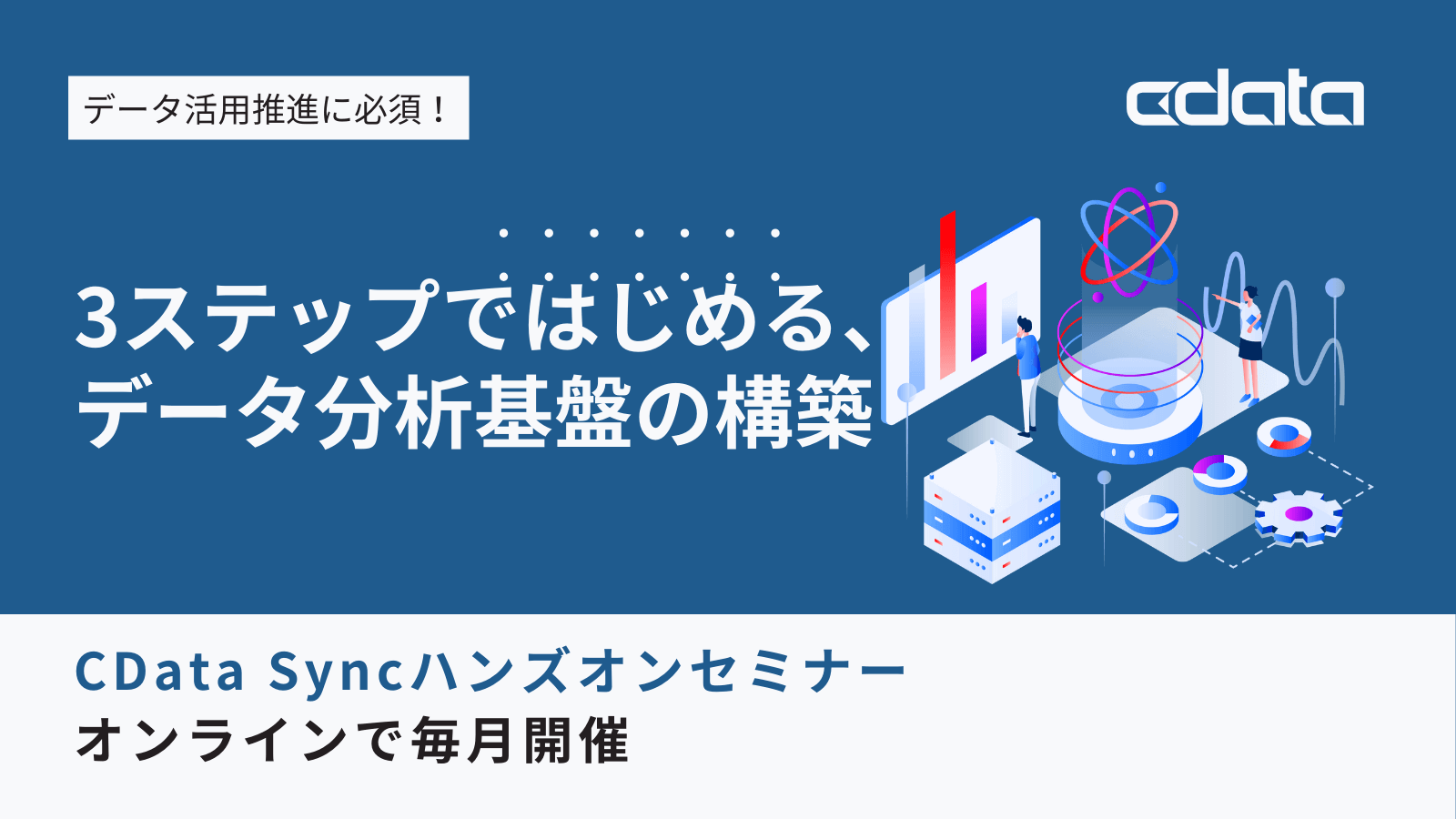ノーコードでクラウド上のデータとの連携を実現。
詳細はこちら →CData Software Japan - ナレッジベース
Latest Articles
- MySQL のデータをノーコードでREST API として公開する方法:CData API Server
- CData Sync AMI をAmazon Web Services(AWS)で起動
- Connect Cloud Guide: Derived Views, Saved Queries, and Custom Reports
- Connect Cloud Guide: SSO (Single Sign-On) and User-Defined Credentials
- Connect Cloud クイックスタート
- Shopify APIのバージョンアップに伴う弊社製品の対応について
Latest KB Entries
- DBAmp: Serial Number Expiration Date Shows 1999 or Expired
- CData Drivers のライセンスについて
- Spring4Shell に関する概要
- Update Required: HubSpot Connectivity
- CData Sync で差分更新を設定
- Apache Log4j2 Overview
ODBC Drivers
- [ article ] CData Software ODBC Driver を使ってMicroStrategy ...
- [ article ] TIBCO Spotfire から、ODBC 経由でMoney Forward Expense ...
- [ article ] Mac OS X 上のMS Excel でMicrosoft Teams データを連携利用
- [ article ] RPA ツールUiPath でPCA Accounting データを連携利用する方法
JDBC Drivers
- [ article ] JReport Designer でIBM Cloud Data Engine データを連携
- [ article ] RazorSQL からGoogle Analytics データに連携。
- [ article ] Jaspersoft Studio からRSS データに接続する方法
- [ article ] PayPal データ のPostgreSQL インターフェースを作成
SSIS Components
- [ article ] Sage 50 UK データからSQL Server ...
- [ article ] BigCommerce をSSIS 経由でSQL サーバーにバックアップする
- [ article ] Ponparemall データからSQL Server ...
- [ article ] xBase データからSQL Server に接続する4つの方法をご紹介。あなたにピッタリな方法は?
ADO.NET Providers
- [ article ] SSAS でOracle Financials Cloud データに連携するOLAP Cube ...
- [ article ] Facebook データをDevExpress Data Grid にデータバインドする。
- [ article ] PowerShell からXML データに接続してデータの更新・挿入・削除を実行する方法
- [ article ] Infragistics WPF XamDataGrid と Zoho CRM をデータバインド
Excel Add-Ins
- [ article ] CDATAQUERY 関数を使って、Excel スプレッドシートにTeradata を自動挿入
- [ article ] CDATAQUERY 関数を使って、Excel スプレッドシートにDB2 を自動挿入
- [ article ] Excel を使ってWooCommerce にデータを追加したり、WooCommerce ...
- [ article ] CDATAQUERY 関数を使って、Excel スプレッドシートにBasecamp を自動挿入
API Server
- [ article ] クラウドRPA BizteX Connect でExcel データにアクセス
- [ article ] Tableau からOData にJDBC Driver で連携してビジュアライズ
- [ article ] Entity Framework 6 からOData データに連携
- [ article ] CData Software ODBC Driver を使ってMicroStrategy ...
Data Sync
- [ article ] Airtable データをSQL Server に連携して利用する4つの方法を比較
- [ article ] Google BigQuery へのIBM Informix データのETL/ELT ...
- [ article ] FHIR データをSQL Server に連携して利用する4つの方法を比較
- [ article ] Apache Cassandra へのYouTube Analytics データのETL/ELT ...
Windows PowerShell
- [ article ] PowerShell からGoogle Campaign Manager ...
- [ article ] PowerShell からTwitter データに接続してデータの取得・更新・挿入・削除・CSV ...
- [ article ] PowerShell からxBase データに接続してデータの更新・挿入・削除を実行する方法
- [ article ] PowerShell を使ってHubSpot データをSQL Server にレプリケーション
FireDAC Components
- [ article ] Delphi のAct-On データへのデータバインドコントロール
- [ article ] Delphi のTeradata データへのデータバインドコントロール
- [ article ] Delphi のMicrosoft Teams データへのデータバインドコントロール
- [ article ] Delphi のLinkedIn データへのデータバインドコントロール





